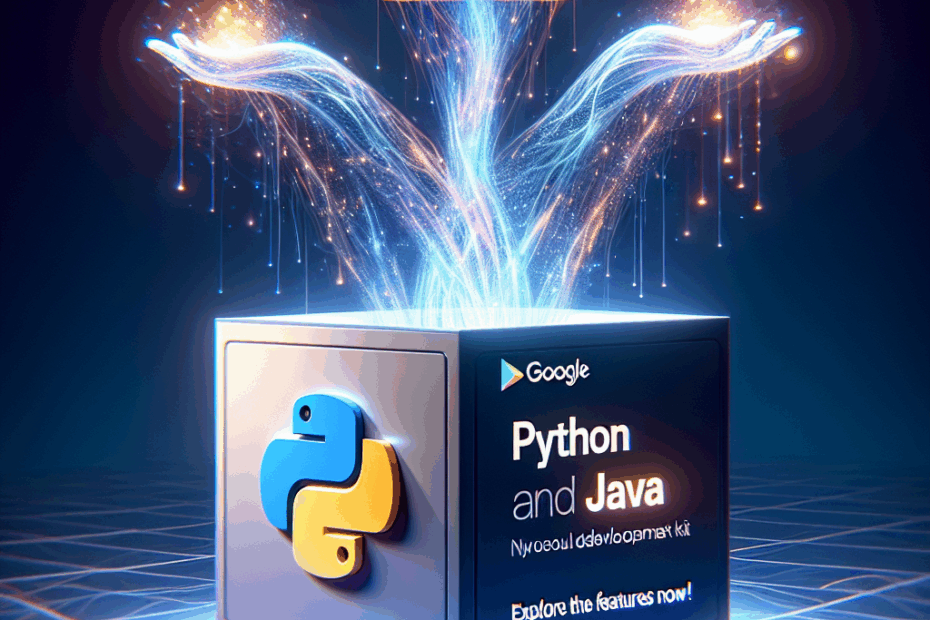“`html
Google’s New AI Agent Toolkits: Making AI Development Easier Than Ever!
Hey everyone, John here! Today, we’re diving into some exciting news from Google that could make building AI assistants (we call them “agents”) a whole lot easier, especially if you know a little bit of coding.
What’s New? Agent Development Kits for Python and Java
Google just released what they call “Agent Development Kits” (ADKs) for two popular programming languages: Python and Java. Think of these kits as collections of helpful tools and building blocks that make it simpler to create AI agents.
Lila: John, what exactly *is* an “AI agent”? It sounds kind of sci-fi!
John: Great question, Lila! An AI agent is basically a computer program that can perceive its environment and take actions to achieve a specific goal. Think of it like a super-smart assistant that can understand your requests and complete tasks for you. Some examples include chatbots, virtual assistants like Siri or Alexa, and even more complex things like robots that can navigate a warehouse.
These new ADKs are designed to give developers more control and flexibility when building these AI agents.
Why Python and Java?
Python and Java are two of the most widely used programming languages in the world, especially for AI development. So, making these ADKs available for these languages opens up AI development to a huge number of developers.
The Python ADK is considered “production-ready,” which means it’s stable and reliable enough for developers to use in real-world applications. The Java ADK is a bit newer, but it still brings a lot of power to Java developers who want to build AI agents.
What Can You Do with These ADKs?
Google says these ADKs are designed to help developers build and deploy “sophisticated AI agents.” But what does that actually *mean*?
Well, the ADKs provide a framework for creating agents that can do everything from simple tasks to complex workflows. Think of it like this: imagine you’re building a house. The ADK provides you with a set of pre-made walls, doors, and windows that you can easily put together, instead of having to build everything from scratch.
Lila: So, it’s like a shortcut for building AI agents?
John: Exactly, Lila! It helps developers focus on the unique features of their agent, instead of spending all their time on the basic building blocks.
Key Features of the ADKs
Here are some of the things you can do with these new ADKs:
- Use pre-built tools: The ADKs come with a bunch of pre-made tools that you can use to give your agents different capabilities. These tools can do things like understand language, translate text, or even access information from the internet.
- Write code directly: The ADKs let you define the logic of your agent directly in Python or Java. This gives you a lot of flexibility and control over how your agent works.
- Build multi-agent systems: You can combine multiple specialized agents into a larger system. This is like having a team of experts working together to solve a complex problem.
Model-Agnostic and Deployment-Agnostic: What does it mean?
Now, Google mentions that the ADK is “model-agnostic” and “deployment-agnostic.” Let’s break that down:
Lila: Uh oh, those sound like big, scary words!
John: Don’t worry, Lila! They’re not as complicated as they sound. “Model-agnostic” means that the ADK can work with different AI models. Think of AI models as the “brains” of your AI agent. The ADK doesn’t force you to use a specific type of brain; you can choose the one that works best for your needs. Google mentions it’s optimized for their Gemini models, but you’re not limited to those.
Lila: Okay, I think I get it. So what about “deployment-agnostic”?
John: “Deployment-agnostic” means that you can deploy your AI agent in different environments. Think of deployment as putting your AI agent “into the world.” The ADK doesn’t force you to put your agent in a specific place; you can choose where it lives, whether it’s on a website, in a mobile app, or on a server.
Making Agent Development Easier
The whole goal of these ADKs is to make agent development more like traditional software development. This means that developers can use the same tools and techniques they’re already familiar with to build AI agents.
By providing these tools, Google hopes to encourage more developers to create AI agents that can solve real-world problems.
My Thoughts
As someone who’s been following AI for a while, I think these ADKs are a really positive step. They lower the barrier to entry for AI development and make it easier for developers to experiment and build innovative new agents. It’s exciting to see Google investing in making AI more accessible.
Lila: As a beginner, this all sounds really cool! I’m excited to see what people build with these new tools. Maybe I’ll even try building my own AI agent someday!
This article is based on the following original source, summarized from the author’s perspective:
Google releases agent development kits for Python and
Java
“`
